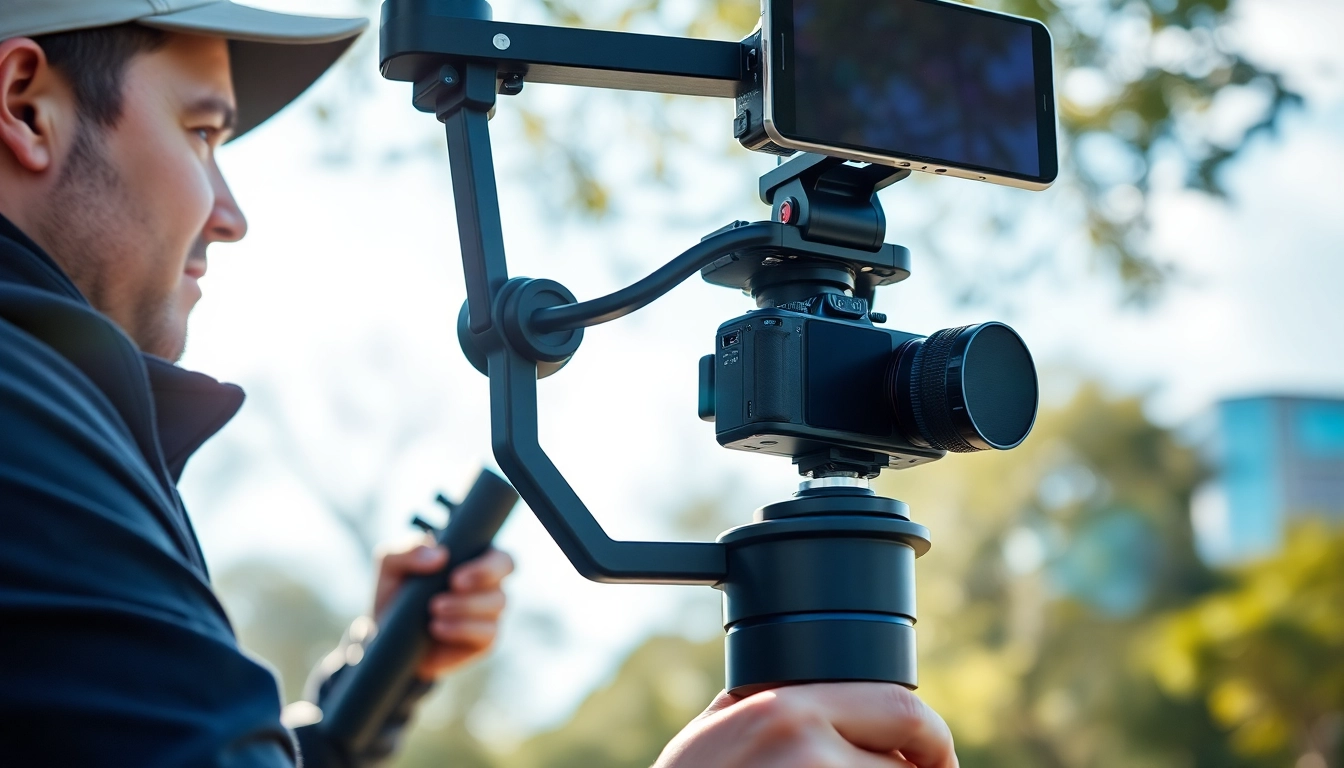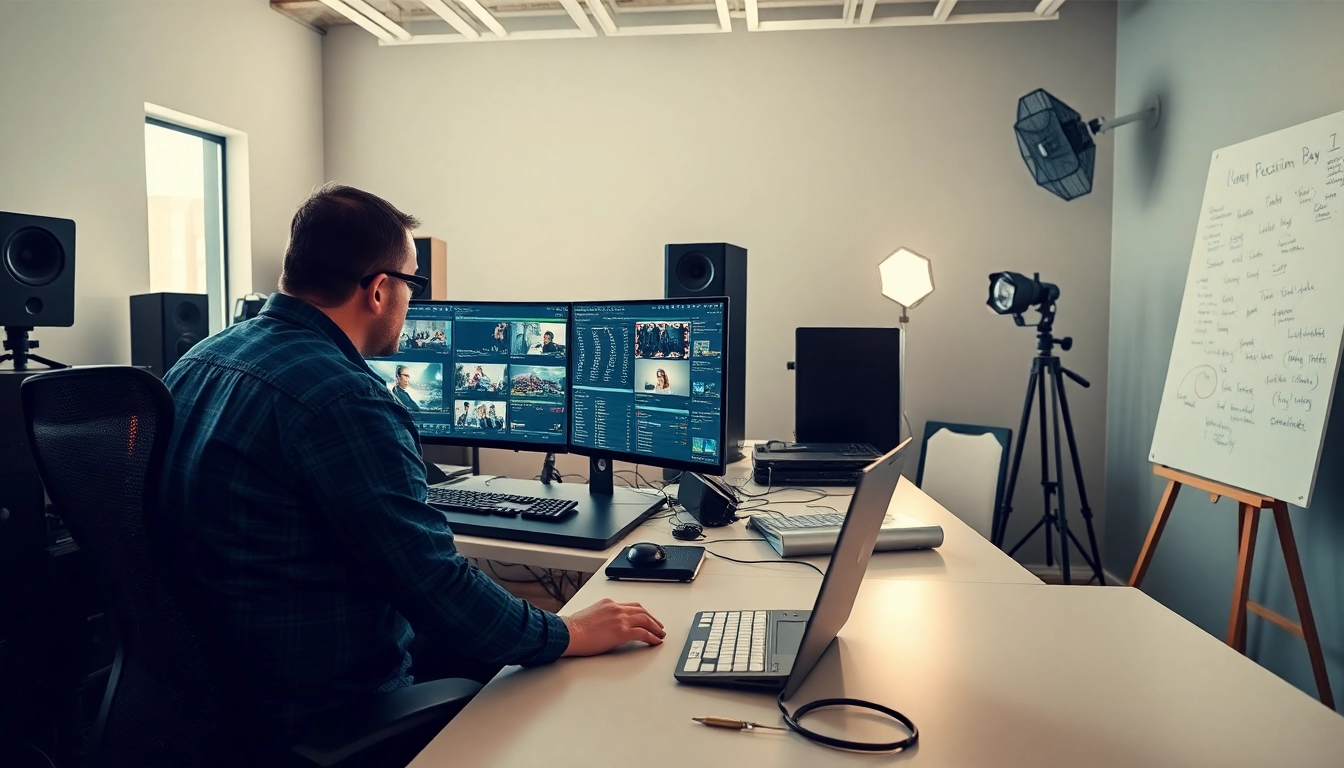Maximizing Your Videography with a Gimbal Stabilizer
In the realm of videography and photography, achieving smooth, cinematic shots has never been more attainable, thanks to innovations like a gimbal stabilizer. These tools allow both amateur and professional filmmakers to elevate their visual storytelling by minimizing unwanted camera movements. In this article, we will delve into everything you need to know about gimbal stabilizers, covering their functioning, benefits, types, selection criteria, operational tips, and essential maintenance practices.
Introduction to Gimbal Stabilizer
What Is a Gimbal Stabilizer?
A gimbal stabilizer is a sophisticated device designed to ensure stable footage by compensating for unwanted motion. At its core, it uses motors and sensors to detect and counteract unwanted camera movements, ensuring that your shots remain steady even in dynamic environments. By enabling smooth panning and tilting, gimbals are essential for capturing high-quality video content, especially in challenging filming conditions.
How Gimbal Stabilizer Works
The operational mechanism of a gimbal stabilizer revolves around the use of three key axes: pitch, yaw, and roll. Each axis is controlled separately by motors that respond to the movement of the camera.
- Pitch: This axis handles the up-and-down movements—like nodding—providing stability when tilting the camera.
- Yaw: This axis allows for side-to-side movements, ensuring a smooth panning effect while following subjects or landscapes.
- Roll: This axis compensates for any tilt so that the horizon remains level, even when the operator shifts their position.
These three axes work independently but in harmony, allowing the gimbal stabilizer to create fluid, dynamic motion that significantly enhances the overall video quality.
Benefits of Using a Gimbal Stabilizer
Investing in a gimbal stabilizer comes with a plethora of advantages that can transform your videography experience:
- Improved Video Quality: One of the primary benefits of using a gimbal stabilizer is the drastic reduction of shaky footage, resulting in a more professional and polished end product.
- Enhanced Control: Gimbals offer filmmakers enhanced control over their shots, allowing for more creativity in terms of angles and movements.
- Portability: Many gimbal stabilizers are lightweight, making them easy to transport. This portability allows videographers to shoot in a wide variety of locations.
- Versatility: Gimbals can work with various camera types, including DSLRs, mirrorless cameras, and smartphones. This makes them an excellent choice for countless scenarios, from professional filmmaking to casual vlogging.
- Increased Engagement: The smoothness of video captures can significantly enhance viewer engagement, making it easier for audiences to appreciate the content rather than being distracted by shaky footage.
Types of Gimbal Stabilizer
Handheld Gimbal Stabilizer
Handheld gimbal stabilizers are perfect for videographers looking to achieve mobility while filming. They are designed to be lightweight and easy to maneuver, allowing for spontaneous shooting in various environments. Typically, these gimbals accommodate lightweight cameras and smartphones, offering features like quick-release systems and adjustable grips that enhance user comfort.
Camera Mounted Gimbal Stabilizer
Camera-mounted gimbal stabilizers are larger, designed to be attached to the camera itself, providing maximum stabilization. These devices are ideal for professional cinematography where larger cameras are used. Often featuring robust motors capable of handling heavier payloads, these gimbals allow for extensive customization options tailored to the operator’s shooting style.
Smartphone Gimbal Stabilizer
Smartphone gimbal stabilizers are specialized devices that accommodate mobile devices, enabling casual videographers and influencers to achieve smooth footage without needing professional gear. These user-friendly gimbals often come packed with features such as object tracking, face tracking, and built-in editing functions that cater to the fast-paced world of social media and content creation.
Choosing the Right Gimbal Stabilizer
Factors to Consider When Selecting
When selecting a gimbal stabilizer, several key factors should guide your decision-making:
- Camera Compatibility: Ensure the gimbal stabilizer is compatible with your camera or smartphone. Check the weight limit and suitable dimensions for proper support.
- Size and Portability: If you often shoot on the go, consider gimbals that are lightweight and easy to transport.
- Battery Life: Look for models with long-lasting battery life, particularly if you plan on shooting for extended periods.
- Stabilization Technology: Evaluate the stabilization technology used by the gimbal, as this impacts the quality of handling camera shake.
Matching Gimbal With Your Equipment
Understanding the specifications of your camera equipment is vital when choosing a gimbal stabilizer. For instance, if you own a large DSLR camera, you’ll need a stabilizer specifically designed for heavier payloads with strong motors. Conversely, if you’re using a smartphone, a lightweight gimbal designed for mobile use will be more appropriate. Match the gimbal’s capabilities with your equipment to ensure optimal performance.
Price Ranges and Budget Options
The market offers gimbal stabilizers across a wide range of price points. Entry-level models can start as low as affordable prices, while professional-grade gimbals will, of course, require a larger investment. It is important to balance your budget with your needs. If you’re a beginner, investing in a budget-friendly gimbal can provide valuable experience, while seasoned professionals may prioritize advanced features and durability.
Tips for Using a Gimbal Stabilizer
Basic Techniques for Beginners
For those new to using a gimbal stabilizer, starting with the right techniques will facilitate smoother filming:
- Hold Steady: Maintain a firm grip on the gimbal while keeping it at waist-level for better stability.
- Practice Walking: Learn to walk slowly and steadily with the gimbal to achieve fluid motion.
- Use the Modes: Familiarize yourself with different gimbal modes such as pan follow, lock mode, and tilt mode to maximize your creative flexibility.
Advanced Movements and Techniques
Once comfortable with basic techniques, you can explore advanced maneuvers:
- Crane Shots: Elevate the gimbal above your head for impressive crane shots that add depth to your scenes.
- Low-Angle Shots: Shoot from low angles by bending at the knees, enhancing perspective and drama.
- Complex Pans: Master intricate panning movements to follow action smoothly and keep subjects in frame.
Common Mistakes to Avoid
Even seasoned professionals can fall into common pitfalls when using a gimbal stabilizer:
- Rushing the Setup: Take the time to properly balance your camera on the gimbal for optimal performance.
- Avoiding Calibration: Neglecting the calibration process can lead to poor stabilization; always check settings before filming.
- Overcompensating: Let the gimbal stabilize naturally rather than over-manipulating movements, which can create unnatural footage.
Maintenance of Gimbal Stabilizer
Cleaning and Care Tips
Caring for your gimbal stabilizer involves regular cleaning to remove dirt and dust that could impact functionality. Use a microfiber cloth for the body and sensors. Ensure that mechanical parts are free from debris, and consider using a can of compressed air to clean out hard-to-reach areas.
Regular Maintenance Practices
To extend the lifespan of your gimbal stabilizer, perform regular maintenance practices such as:
- Checking the Firmware: Regularly update the firmware to ensure your gimbal stabilizer has the latest features and bug fixes.
- Battery Care: Routinely check and maintain the battery to ensure reliability. Avoid letting it deplete completely before recharging.
- Storage: When not in use, store the gimbal in its designated case to protect against physical damage or environmental factors.
When to Seek Professional Help
If you encounter persistent issues with your gimbal stabilizer that cleaning and basic techniques don’t resolve, seeking professional assistance is wise. Signs that you may need help include unusual noises during operation, the inability to balance, or rapid battery drainage. Technicians can diagnose faults and perform necessary repairs to get you back to filming.
Conclusion
In summary, the value of a gimbal stabilizer in modern videography is immense, offering filmmakers the tools needed to achieve stunning footage effortlessly. From understanding its workings to selecting the appropriate model, mastering its use, and ensuring proper maintenance, filmmakers can ensure they harness the full potential of this technology. Investing in a quality gimbal stabilizer not only enhances the quality of your work but also helps you create memorable visual narratives that resonate with audiences.



